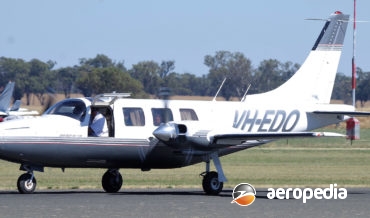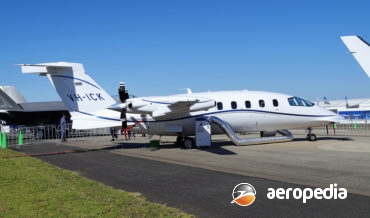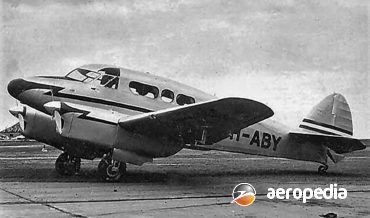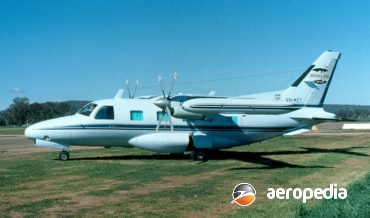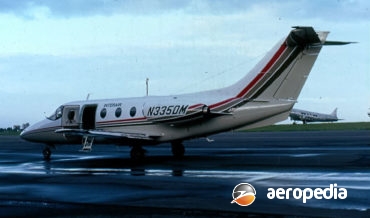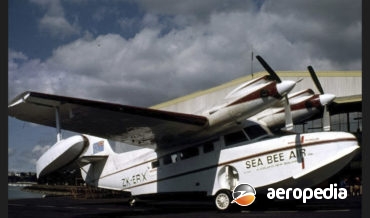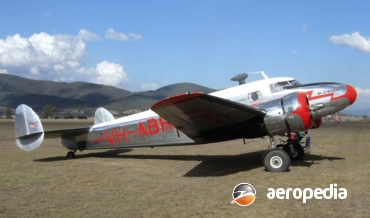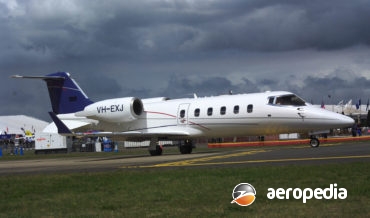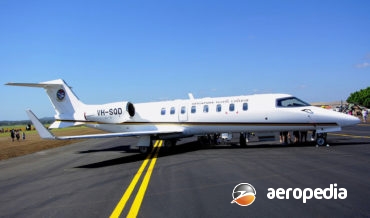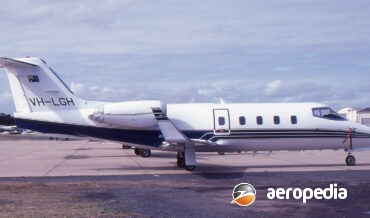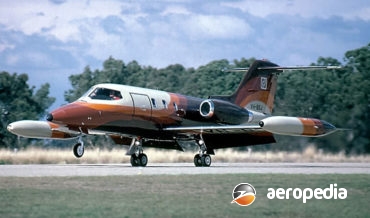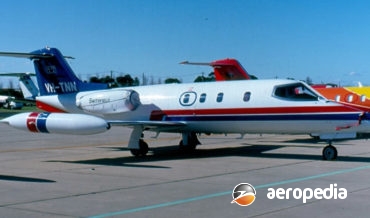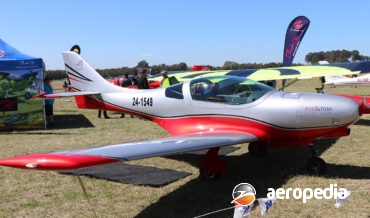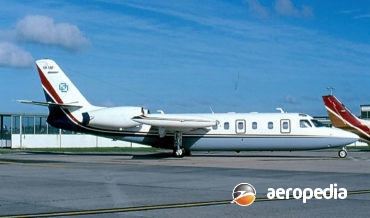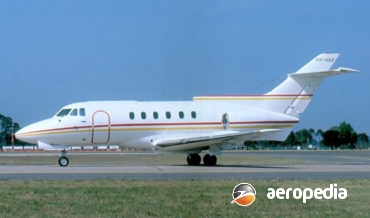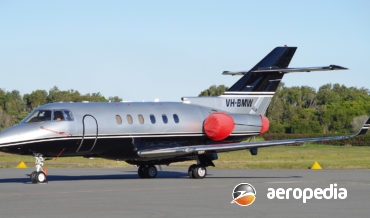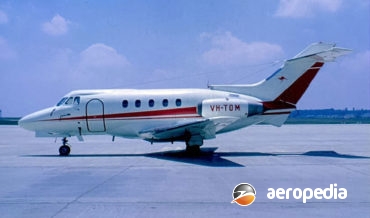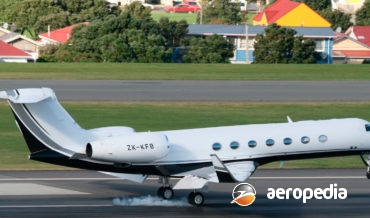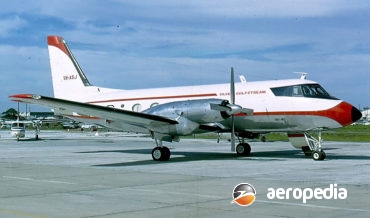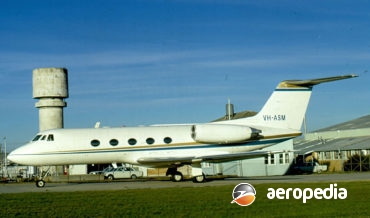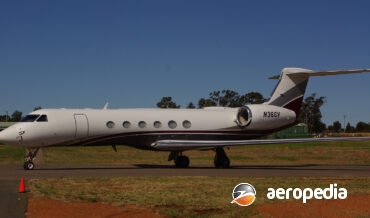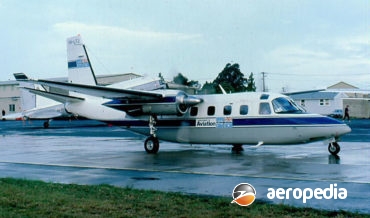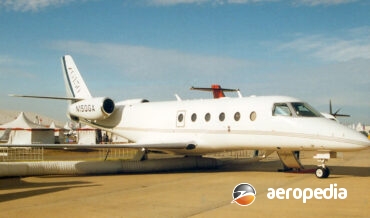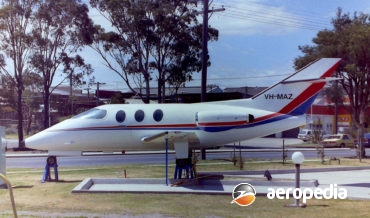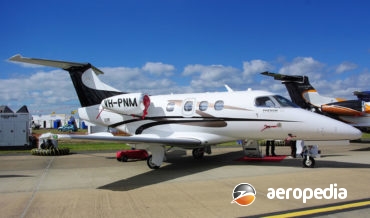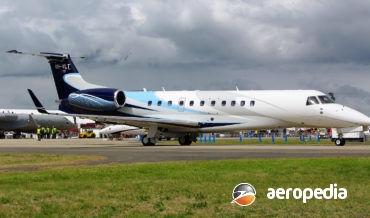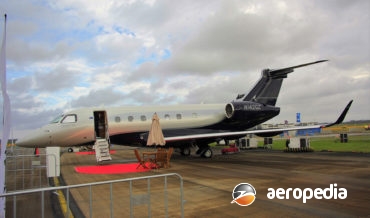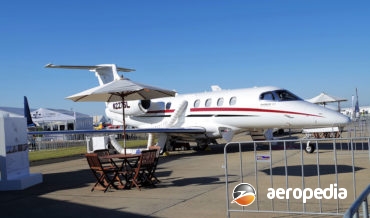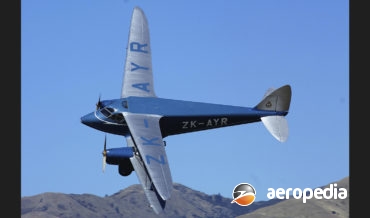All Contents
Contents
When introduced to the Piper range in 1979, the Malibu was the only production six-seat pressurised single-engine business aircraft.
David C. Eyre
- May 8, 2019
The prototype of the Smith Aerostar series, known as the 320, flew for the first time in November 1966 powered by two Lycoming IO-320 engines but as time went by more powerful engines were fitted to new models to increase performance.
David C. Eyre
- May 8, 2019
The Avanti is of unusual design and is a mid-wing, three flying-surface aircraft designed to provide minimal drag and fuel consumption at the speed of a jet aircraft, keeping the main spar and engines behind the cabin to reduce noise and with a roomy cabin with good internal space and
David C. Eyre
- May 8, 2019
In 1972 Piper added the PA-31-350 Navajo Chieftain to its range. The overall length had been increased by 0.61-m (2-ft), thus allowing for a 20-percent increase in overall cabin volume to provide accommodation for up to nine passengers plus the pilot in a commuter/charter aircraft role.
David C. Eyre
- May 8, 2019
The Percival Q.6 was designed by Edgar Percival in about 1937 as a twin-engine monoplane with accommodation for four passengers in executive comfort and a crew of two powered by two Gipsy Six engines.
David C. Eyre
- May 8, 2019
The M-22 Mustang was the first attempt by the Company to produce a single-engine pressurised aircraft and was the ultimate development of the Mooney 20 series of high-performance aircraft.
David C. Eyre
- May 8, 2019
The first design of the famous Mitsubishi company to enter production (in notable quantity) after the completion of hostilities in World War II, the MU-2 was designed as a general-purpose light transport which could be used by military operators, as a small airliner, for cargo, or as an executive transport.
David C. Eyre
- May 8, 2019
Following the success of the MU-2 series, Mitsubishi in 1977 embarked on the design of a new business jet known as the MU-300, this being a conventional low-wing aircraft with a T-tail powered by two Pratt & Whitney JT-15D turbofans mounted on the rear fuselage
David C. Eyre
- May 8, 2019
The history of the Grumman Goose is dealt with elsewhere and need not be dealt with in any detail here.
David C. Eyre
- May 8, 2019
In 1935 the Lockheed Aircraft Corporation decided to build a smaller version of its very successful Model 10 for feeder-line and business use.
David C. Eyre
- May 8, 2019
The Learjet 60 was announced on 3 October 1990 as the successor to the Learjet 55C, the first proof-of-concept aircraft flying with a Pratt & Whitney PW 305 turbofan on 18 October 1990, flying with two PW 305s in May 1992.
David C. Eyre
- May 8, 2019
The Learjet 31 is one of a series of business and executive jet aircraft produced by Learjet, which is a subsidiary of Bombardier Aerospace.
David C. Eyre
- May 8, 2019
For many years the Learjet was marketed as the fastest business jet in production, and more than 1,500 examples of a variety of models have been built.
David C. Eyre
- May 8, 2019
The design of the Learjet 45 was announced at the NBAA convention in the United States on 29 September 1992. The prototype/first production aircraft (N45XL) was first flown on 7 October 1995, being followed by the second aircraft (N452LJ) on 6 April 1996.
David C. Eyre
- May 8, 2019
The Longhorn 55 was a development of the former Learjet series, being a mating of the wing used on the Series 28 and 29 with a new designed fuselage possessing a 50% greater cross section.
David C. Eyre
- May 8, 2019
For many years marketed as the fastest business jet in production, the Learjet was also the most well known and one of the best selling, with some 745 turbojet examples having been delivered in the 23, 24, 25, 28 and 29 series.
David C. Eyre
- May 8, 2019
For many years the Learjet was marketed as the fastest business jet in production. It was designed by William P Lear in Switzerland as the SAAC-23, being eventually produced in Wichita, Kansas, the prototype Model 23 flying for the first time on 7 October 1963.
David C. Eyre
- May 8, 2019
The VL-3 Evolution was marketed by Jean-Marie and Jean-Baptiste Guisset who operated a training organisation in Belgium, they taking over the operation of the airfield in 1980.
David C. Eyre
- May 8, 2019
Designed by the Aero Commander company in the USA as a jet executive transport to augment its range of business and executive aircraft, the first of two Aero Commander 1121 prototypes was flown for the first time on 27 January 1963, followed by the second prototype on 14 April 1964.
David C. Eyre
- May 8, 2019
The Series 600 was introduced to the market in 1971 and was powered by two 3,750 lbst Viper 600 series engines with a two-stage turbine.
David C. Eyre
- May 8, 2019
The de Havilland DH-125 series was intended as a jet-engined replacement for the de Havilland DH-104 Dove executive aircraft, the project being announced in February 1961.
David C. Eyre
- May 8, 2019
Over the years development of the series continued, one variant being the Series 900XP which was a model which combined the airframe, operating weights and systems of the 850XP model, including the winglets, but which was fitted with the new Honeywell TFE731-50R turbofan which provided a five percent reduction in
David C. Eyre
- May 8, 2019
Once the Hawker 800 series was placed in production British Aerospace looked at a further development of the type and, despite being the most capable model of all the various models, only 52 examples were completed.
David C. Eyre
- May 8, 2019
Known for a short time as the ‘Jet Dragon’, the DH-125 later became known as the HS-125 when the merger of several British aircraft companies occurred.
David C. Eyre
- May 8, 2019
In 2008 Gulfstream announced it was going to introduce a new long-range business aircraft known as the 650 to fill a niche in the corporate market between the company’s own G550 and the Bombardier Global XRS, and the Boeing Business Jet and Airbus Corporate Jetliner.
David C. Eyre
- May 8, 2019
To increase the performance and load carrying capacity of what was becoming an old flying boat, a number of persons and organisations looked at replacing the engines and equipment in the Mallard, one of these being Mr R Peterson of Northern Consolidated Airlines in the US, he having obtained c/n
David C. Eyre
- May 8, 2019
In 1956 Grumman set out to produce a long-range transport capable of operating to airline standards to replace the large number of Douglas DC-3s and similar types serving as business and executive aircraft in the USA.
David C. Eyre
- May 8, 2019
In May 1965 Grumman Aerospace launched a successor to the Gulfstream I powered by Rolls Royce Spey turbofans, this becoming known as the Gulfstream II.
David C. Eyre
- May 8, 2019
Following the success of the Gulfstreams II and III Grumman introduced the Model IV, of which 340 examples were built in two basic models, the G-IV and G-IV-SP, examples of which were supplied to the US military services as the C-20.
David C. Eyre
- May 8, 2019
The prototype of the Series 1000 (or 695B) was flown for the first time on 12 May 1980 and deliveries of production aircraft began in July of the following year.
David C. Eyre
- May 8, 2019
In recent years Gulfstream, part of the General Dynamics company, has built and marketed a range of executive jets to meet customer demands and has brought examples of the various models to Australasia on demonstration tours.
David C. Eyre
- May 8, 2019
Gulfstream Aerospace Corp was founded in 1958 and is a wholly owned subsidiary of General Dynamics.
David C. Eyre
- May 8, 2019
The Foxjet was developed in the 1970s by Foxjet International as a small business jet half the size of a Learjet, able to operate from grass-strips, and with low operating costs
David C. Eyre
- May 8, 2019
The Phenom 100 is one of a range of executive turbofan powered aircraft built by the Brazilian company Embraer.
David C. Eyre
- May 8, 2019
The Legacy 600 is one of a series of business and executive aircraft designed, developed and constructed in Brazil by Embraer, being a development of the ERJ 135 family of commercial airliners, but being fitted with the Mark I cockpit installed in the EMB 145 series.
David C. Eyre
- May 8, 2019
Described as the only mid-size business transport to feature FBW (fly-by-wire) technology, the Legacy 500 series entered service in the second half of 2014.
David C. Eyre
- May 8, 2019
The Phenom 300 was developed by Embraer in Brazil with the advice of executives, pilots and owner/operators to meet the evolving needs of business travellers and has a ‘new Oval Lite profile’ with an interior designed by MBW Group Designworks USA to give a new level of comfort to
David C. Eyre
- May 8, 2019
The genesis of the DA-42 commenced in 1981 when the then Austrian-based company, Diamond Aircraft Industries, produced a series of gliders and has continued over the years to produce the DA-20, DA-40 and DA-42 series, these being very distinctive aircraft in having long high-aspect ratio wings, winglets, and a tapered
David C. Eyre
- May 8, 2019
Diamond Aircraft in Wiener Neustadt, Austria commenced business producing the DA-20 Katana series and in due course was the instigator of aircraft being fitted with diesel engines to reduce running costs.
David C. Eyre
- May 8, 2019
The Dragonfly, the prototype of which (E-2 c/n 7500 – later G-ADNA) was first flown on 12 August 1935, was designed as a twin-engine business and executive transport seating five.
David C. Eyre
- May 8, 2019
Recent Comments
Archives
Categories
- No categories
Categories
- No categories
Latest Posts
Newsletter


